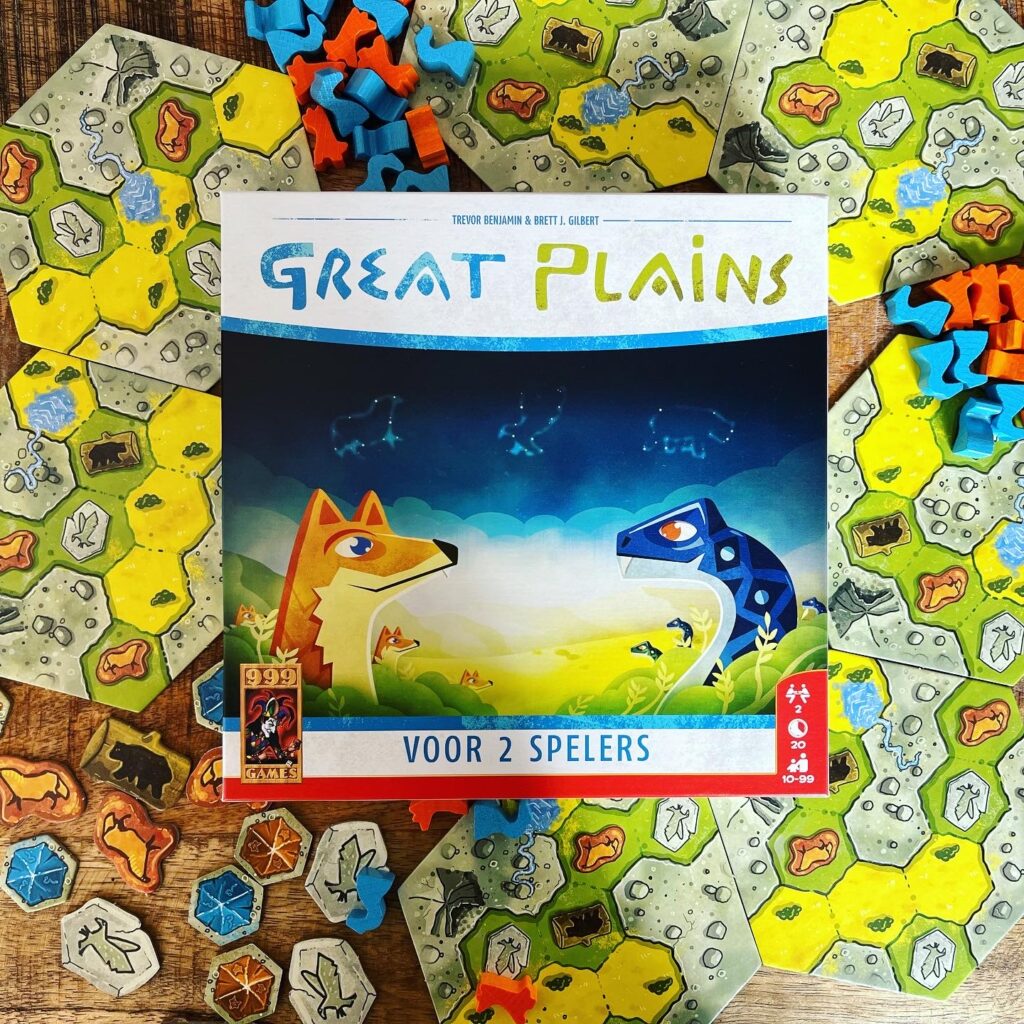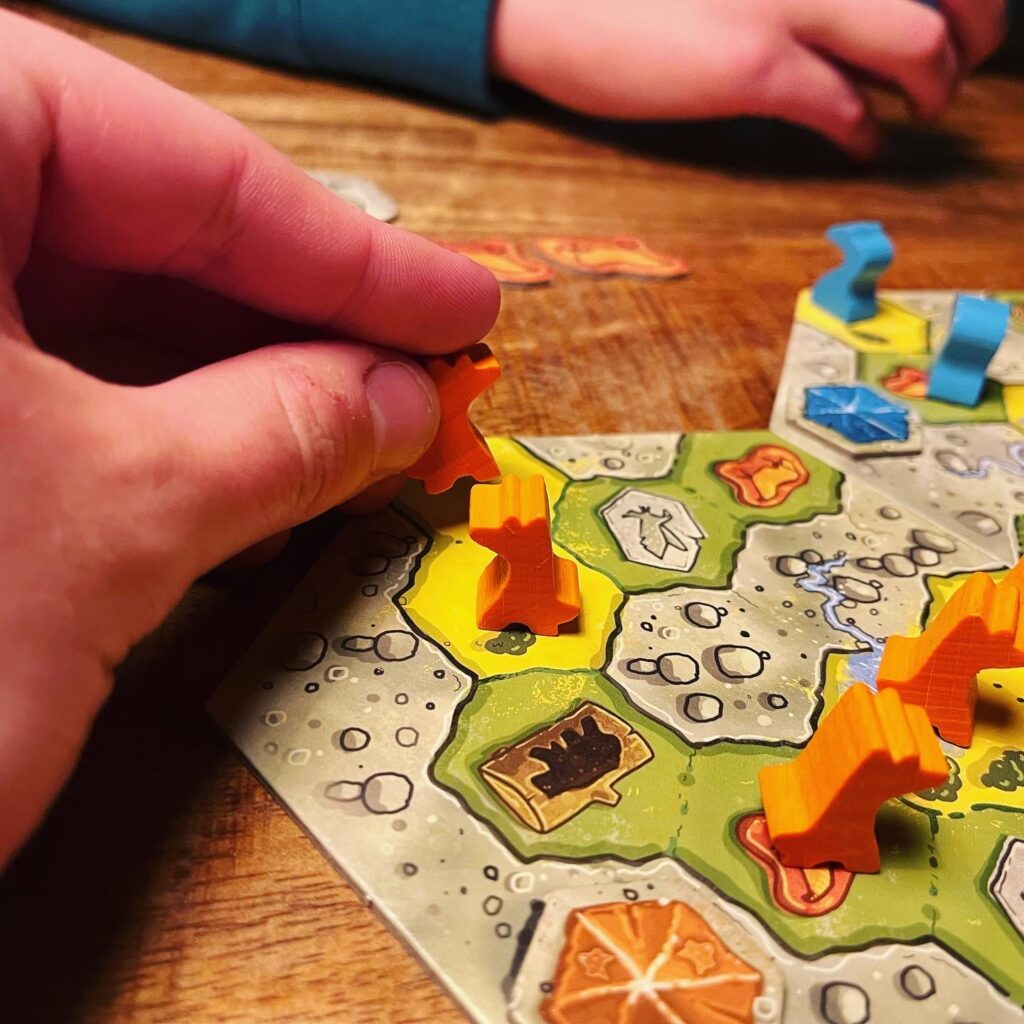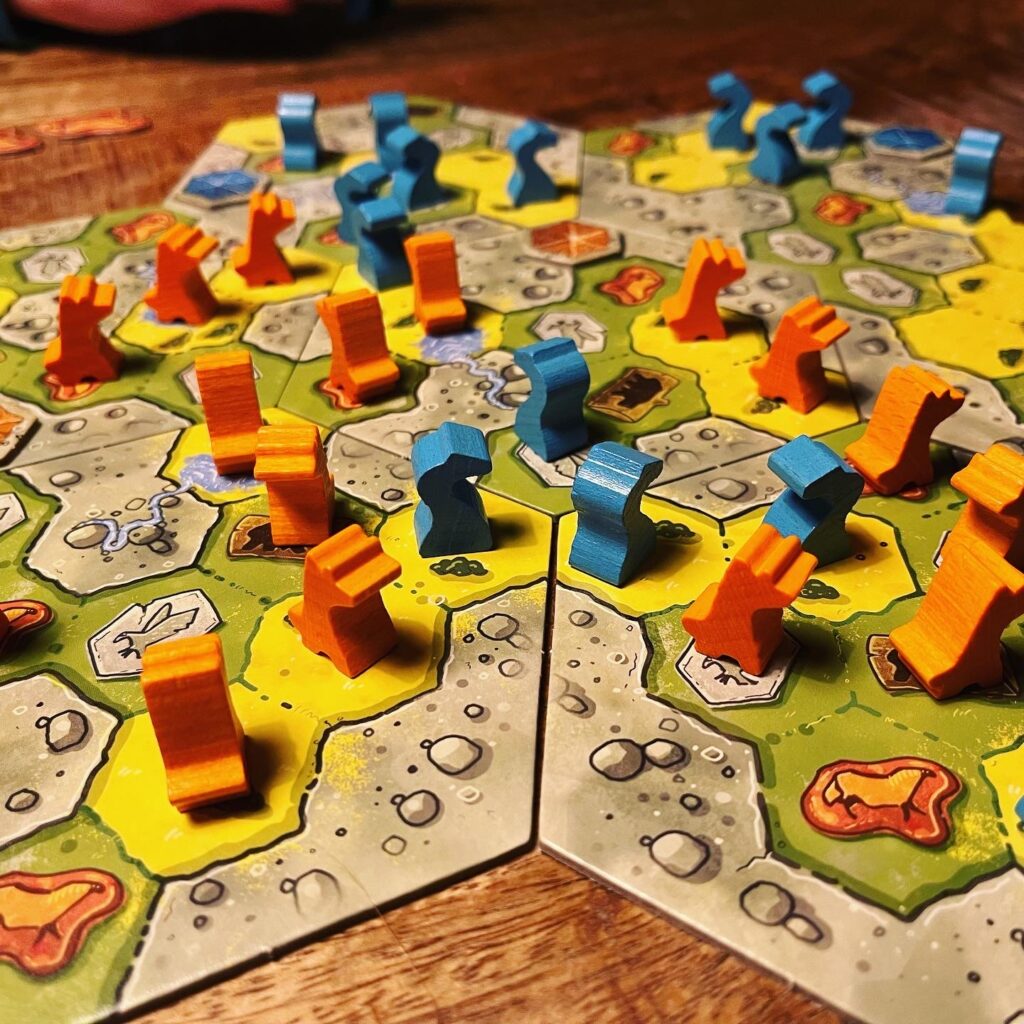As Bob Nolan once wrote: All day I’ve faced a barren waste without the taste of water, cool water… Old Dan and I with throats burned dry and souls that cry for water, cool, clear water. Anyone who has ever seen a Western is familiar with the dry plains of North America and the lack of clean, clear drinking water on these Great Plains. The Great Plains is a vast flat area in North America west of the Mississippi River and east of the Rocky Mountains. The area, mostly free of human influence, consists largely of vast and untamed landscape covered in prairie, steppe and grassland. Nowadays, but especially in older times, the animals of the plains had the upper hand. In this two-player game, two tribes battle each other for control of the Great Plains steppe. Will you be able to level your opponent with the steppe ground or will plainly put: lose?

Fertile soil and water are rare on the steppe and players in Great Plains try to conquer these areas. If a player has the majority of a piece of steppe, he or she scores points depending on the size of this steppe area and the presence of spring water. On the board, players find mountains (mountains, caves and wells) and lowlands (steppe and grassland).
After placing the game board (consisting of different tiles to build the plain), players place caves in their colour on the game board. Then the game can begin. Players take the role of a tribe (foxes or snakes) and take turns placing one of their tribal pawns on the modular game board. Players can only place their tribal pawns on lowlands and must always place pawns adjacent to pawns or a cave of their colour.

On the grasslands, players will encounter horses, eagles and bears. These large beasts are neutral in the battle between you smaller animals, but are happy to lend a helping hand. When a player visits one of these animals on the game board, the player gets a corresponding token (if still available). By playing a token, players can make use of a special characteristic of these animals. With a horse they can place pawns further away from an existing pawn, with the eagle they can fly over the mountains and with the bear they can drive away pawns of the other player.
Great Plains is an incredibly simple game concept (consisting of only 4 small pages of rules full of examples and illustrations), which made me all the more surprised how unique and refreshing the game feels. The game can be set up in less than a minute, explained in less than three minutes and played in less than 20 minutes. Each turn, you only play one action: placing a pawn, but there are more than enough choices to make. With each move, you have to make a tactical decision. Are you going to collect animal chits for the special actions or try to conquer the steppe for points? Will you spread your pawns out to conquer more steppes or will you concentrate your pawns in certain areas? Great Plains is actually an abstract strategy game with a nice theme. This makes the game elegant and it actually resembles games such as chess. Due to the short playing time and the tactical and strategic nature, you will want to play several games in a row. I would have preferred that the game would’ve been released smaller box, because it is almost the ideal travel game. Highly recommended for two tactical tribal elders!




